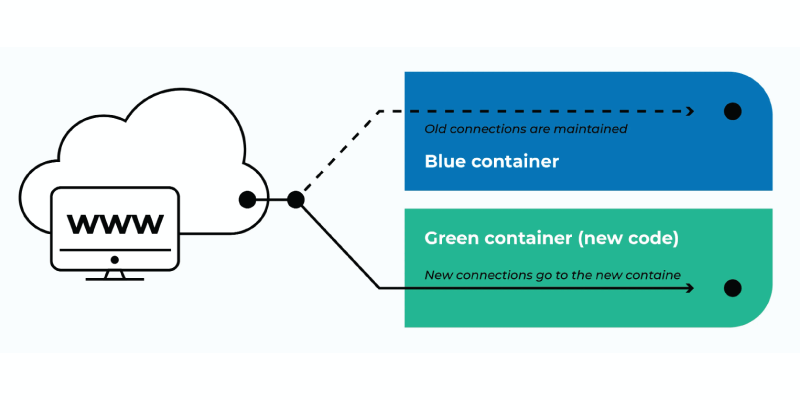Are you tired of spending endless hours writing impeccable code, only to face deployment roadblocks that hinder its impact?
Picture this: your newest software solution is ready to wow the world, but it languishes in ambiguity due to inefficient deployment strategies. How can you overcome this challenge and ensure your work reaches its full potential? Fear not, intrepid software developer!
Today, we’ll open the toolbox and discover several deployment strategies, along with practical examples and insights that will revolutionize your approach. Bid farewell to lackluster deployments and embrace a world where your code can shine in the hands of eager users.
Continuous Integration and Continuous Deployment (CI/CD)
One of the most popular and impactful deployment strategies is CI/CD. By automating the integration, testing, and deployment processes, CI/CD enables developers to release software frequently and without fear. Popular tools like Jenkins, GitLab CI/CD, and CircleCI provide robust pipelines that streamline the deployment workflow. Finally, by utilizing CI/CD, we ensure faster time-to-market, reduce the risk of bugs, and improve collaboration among team members.

Blue-Green Deployment
If we wish to minimize downtime and ensure a smooth transition from one version of an application to another, the blue-green deployment strategy is the best way to go. This approach involves maintaining two identical production environments, with only one being active at a time. The inactive environment, known as the “blue” or “green” environment, is updated with the newest version of the app. Once the deployment is successful, traffic is effortlessly switched to the updated environment. Furthermore, blue-green deployments are particularly useful when reverting back to the previous versions becomes a necessity.
Canary Releases
Next, we have the canary releases. They are ideal for companies that want to gradually introduce new features or updates to a subset of users before scheduling a full-scale app release. By routing a small percentage of live traffic to the updated version of an app, developers can monitor its performance, gather user feedback, and identify any potential issues. Lastly, canary releases provide valuable insights and allow for quick adjustments before a full rollout, ensuring a smooth user experience and mitigating potential risks.
Immutable Infrastructure
Traditionally, modifying live servers can be a risky business and result in unforeseen consequences. To that end, immutable infrastructure offers a solution by treating servers as disposable entities. Instead of making changes directly to a running server, this type of infrastructure promotes creating new instances with the desired changes and swapping them out. Thus we achieve consistency, scalability, and simplify rollbacks if issues arise during deployment. Tools like Docker and Kubernetes promote the implementation of immutable infrastructure.
Feature Flags
Feature flags, also known as feature toggles, allow developers to enable or disable specific features of an app on demand. By decoupling deployment from release, feature flags provide flexibility and control over feature activation. When needed, developers can gradually release features, test their impact, and easily roll back. Feature flags also enable A/B testing, where different versions of a feature can be compared to determine the most effective implementation.
Conclusion
Deploying software effectively is vital for software developers to deliver high-quality apps while minimizing downtime and potential risks. By implementing strategies such as CI/CD, blue-green deployments, canary releases, immutable infrastructure, and feature flags, we can optimize the deployment process, enhance collaboration, and improve user experience. Embracing these practical deployment strategies enables engineers to stay ahead in today’s competitive software development space.
Remember, the success of a deployment strategy lies not only in its implementation but also in continuously evaluating and adapting it to the evolving needs of the software and its users. By prioritizing efficient deployments, developers can ensure the long-term success and satisfaction of their projects.